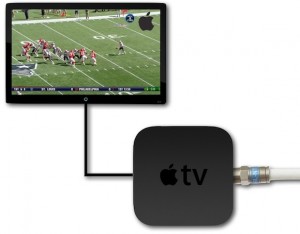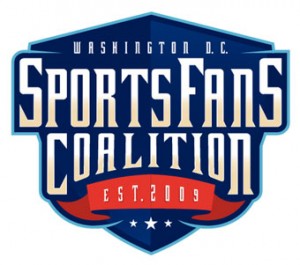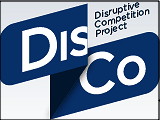A sample text widget
Etiam pulvinar consectetur dolor sed malesuada. Ut convallis
euismod dolor nec pretium. Nunc ut tristique massa.
Nam sodales mi vitae dolor ullamcorper et vulputate enim accumsan.
Morbi orci magna, tincidunt vitae molestie nec, molestie at mi. Nulla nulla lorem,
suscipit in posuere in, interdum non magna.
|
Even before the landmark United States v. Microsoft Corp. antitrust case, competition law was a bit schizophrenic when it came to the question of interoperability. Monopolists have no general duty to make their products work with those of competitors, but what about the situation where a dominant firm deliberately re-designs products to render them incompatible with others? That is the provocative question raised by several pending antitrust lawsuits filed against Green Mountain Coffee, manufacturer of the Keurig line of single-serve coffee makers and coffee “pod” products.
TreeHouse Foods alleged in a complaint last winter that after its patent on “K-Cups” expired in 2012, Green Mountain:
abused its dominance in the brewer market by coercing business partners at every level of the K-Cup distribution system to enter into anticompetitive agreements intended to unlawfully maintain Green Mountain’s monopoly over the markets in which K-Cups are sold. Even in the face of these exclusionary agreements that have unreasonably restrained competition, some companies, such as TreeHouse, have fought hard to win market share away from Green Mountain on the merits by offering innovative, quality products at substantially lower prices. In response, Green Mountain has announced a new anticompetitive plan to maintain its monopoly by redesigning its brewers to lock out competitors’ products. Such lock-out technology cannot be justified based on any purported consumer benefit, and Green Mountain itself has admitted that the lock-out technology is not essential for the new brewers’ function.
In the consolidated multi-district litigation that ensued, Green Mountain is specifically charged with designing a so-called “Keurig 2.0” brewer which features technology that allows it to detect whether a coffee cartridge is one of Keurig’s K-Cups or is made by a third party that does not have a licensing agreement with the company. The machine will not brew unlicensed coffee pods.
The federal court overseeing the MDL cases denied the plaintiffs’ motion for an injunction on procedural grounds in September, issuing an opinion which reasoned that commercial success of the “2.0” brewers was uncertain and that coffee competitors would still have open access to some 26 million Keurig “1.0” machines for several years. In other words, the court did not reach the merits of the monopolization claim against Green Mountain.

So where does that leave Keurig? As Ali Sternburg observed before revelations of its new 2.0 technology, Green Mountain’s prior 20 years of patent protection allowed the company to build a competitive advantage by “cultivating its brand (which likely involves trademark protection), honing its supply chain efficiencies, and generally maintaining its dominance due to having the first-mover advantage.” More than ten years before those patents first issued, moreover, the federal courts had ruled that new product introductions by monopoly firms — in one well-known instance, Kodak — would not be considered an antitrust violation because “a firm that pioneers new technology will often introduce the first of a new product type along with related, ancillary products that can only be utilized effectively with the newly developed technology.”
Continue reading K-Cups, Innovation and Interoperability
Nearly six months before this week’s reveal of iPhone 6 and the Apple Watch, the Wall Street Journal reported that Apple was in talks with Comcast Corp. about “teaming up for a streaming-television service that would use an Apple set-top box and get special treatment on Comcast’s cables to ensure it bypasses congestion on the Web.” For content, the product reportedly would not only offer users access to on-demand movies, TV programs and other apps, including games, but also live Comcast cable programming. This raises a serious question whether such an arrangement would represent a procompetitive development or instead further delay a languishing 20-year federal effort to create a commercially viable retail market for cable set-top boxes (“STBs”).
There are three sets of obstacles potentially standing in the way of this initiative. First are business issues associated with customer control. As commentary noted at the time:
Back in February it seemed both Comcast and DirecTV were reluctant to allow Apple to develop a system where customers logged in using their Apple credentials instead of their pay-TV accounts. The fundamental question of who gets to have the primary relationship with the customer has played prominently in Apple’s negotiations with magazine and newspaper publishers in the past, so it makes sense that the issue would pop up again in a different medium. Given that Comcast has been investing in its own advanced set-top boxes, the cable giant is probably not ready to cede too much ground too quickly.
The second set of issues relates to whether Apple, or any content provider, should be permitted to pay for routing of its IPTV traffic as a managed service, receiving priority handling for the packets involved, from ISPs. That is a subset of the network neutrality debate, commonly referred to as “paid prioritization,” that continues to rage before the FCC and Congress.
 Yet a third set of issues has received scant attention in the business media. That is, how would an Apple STB deal with the 1996 legal mandate that so-called “navigation devices” be available for retail purchase by consumers, in other words unbundled from cable television and broadband service? Apple is known to have the most popular, addictive and tightly integrated ecosystem of all technology companies. The company is famous for steadfastly protecting this closed ecosystem and declining to make its hardware, or most software, interoperable with other platforms. The devices and software Apple sells are designed to work well with each other and sync easily so that preferences and media can be copied or shared with multiple devices without much effort. Applications work on many devices at the same time — even with a single purchase — and user interfaces are very similar across devices. Sure, out of necessity Apple offers iTunes software for Windows (supporting both the iTunes Store for music and video purchases and iPhone syncing on Windows PCs), but at their core most Apple products work best, if at all, only with other Apple products. Yet a third set of issues has received scant attention in the business media. That is, how would an Apple STB deal with the 1996 legal mandate that so-called “navigation devices” be available for retail purchase by consumers, in other words unbundled from cable television and broadband service? Apple is known to have the most popular, addictive and tightly integrated ecosystem of all technology companies. The company is famous for steadfastly protecting this closed ecosystem and declining to make its hardware, or most software, interoperable with other platforms. The devices and software Apple sells are designed to work well with each other and sync easily so that preferences and media can be copied or shared with multiple devices without much effort. Applications work on many devices at the same time — even with a single purchase — and user interfaces are very similar across devices. Sure, out of necessity Apple offers iTunes software for Windows (supporting both the iTunes Store for music and video purchases and iPhone syncing on Windows PCs), but at their core most Apple products work best, if at all, only with other Apple products.
As a business strategy, the closed Apple ecosystem experienced some very bad years in the mid-1990s, yet today has propelled Apple into its current status as the world’s most valuable corporation. As a legal and policy matter, though, things could be quite different.
Continue reading Apple’s Cable Set-Top Box and Interoperability

On behalf of the Sports Fans Coalition, I filed a brief yesterday with the FCC urging it to block the acquisition by Comcast Corp. of Time Warner Cable Inc. The gist of the argument is that the anticompetitive effects of vertical integration by cable systems have now reached crisis proportions with the ongoing refusal — already more than five months old and with no end in sight — of TWC to license Los Angeles Dodgers baseball games for cable or satellite distribution, or local broadcast, on any network other than its own SportsNet LA cable programming channel.
Hence this bold call for a remedy:
The Commission [should] hold the Applications in abeyance, declining to act all in this docket, unless and until TWC makes the SportsNet LA channel, and its exclusive Los Angeles Dodgers baseball content, available to all competing MVPDs at “fair market value and on non-discriminatory prices, terms and conditions,” and on the merits either (a) deny the Comcast-TWC request for transfer-of-control in its entirety, or (b) require the divestiture of all of Comcast’s RSN properties — sufficient for an independent competitor to operate the channels on profitable, going concern basis — as a condition to approving the acquisition of TWC.
Tuesday was a big day in the world of tech-powered disruptive innovation. What the news of April 22nd shows, however, is expanding use of the legal process by incumbent industries to thwart change — and the unfortunately all too frequent concurrence of regulators and courts with that ancient mantra of obsolescent businesses, namely “consumer protection.” Old, entrenched industries frequently lean on their political connections and get the government to come up with some new justification (or recycle an old one) for shutting down upstart rivals or, at the very least, undermining their competitive advantages.
Tuesday witnessed two potentially landmark events, ones that may in time change this familiar paradigm. The first was the morning hearing before the U.S. Supreme Court in ABC v. Aereo, the broadcast networks’ copyright law challenge to the now well-known streaming IPTV start-up. The second, just slightly later in the day, were oral arguments at a New York state court in Albany over whether Airbnb will be permitted to offer its peer-to-peer apartment rental services in New York City, where a 2010 measure meant to curb unregulated hotels prohibits renting out an apartment for less than a month.

The DisCo Project has devoted a series of posts to the Aereo case. Like a Sony Betamax for the 21st century, the Supreme Court is being asked to decide whether moving technology that is lawful for an individual to use on his or her own becomes a copyright violation if offered over the Internet. But the major broadcast networks (like the movie studios who opposed VCR recording in the 1980s) are convinced their entire business model will collapse if Aereo is sanctioned, threatening the nuclear option of stopping over-the-air transmission in favor of all-cable distribution should Aereo prevail.
Airbnb, in contrast, is fighting an effort by New York regulators to collect the names of Airbnb hosts who are breaking the law by renting out multiple properties for short periods. The company, which is now estimated to be worth $10 billion, is framing the dispute as a case of government scooping up more data than it needs for purposes that are vague. What the tussle is really about, of course, is whether the renting public actually needs protection from “unregulated hotels” and, even if true, why Airbnb’s efforts to make a market for DIY rentals is at all harmful. Continue reading Tech Tuesday: Litigation, Legislation and Regulatory Protectionism
Recently the United States federal antitrust enforcement agencies — the Federal Trade Commission and the Justice Department’s Antitrust Division — issued a joint policy statement designed to “make it clear that they do not believe that antitrust is, or should be, a roadblock to legitimate cybersecurity information sharing.” The release made headlines globally, but the real story is that the risk of antitrust exposure for exchange of cyber risk information, even among direct competitors, was and remains almost non-existent.

That is because the U.S. antitrust laws (principally Section 1 of the Sherman Act) prohibit horizontal conspiracies and agreements among rivals, like price fixing, that harm competition. In some areas, information exchange can be competitively problematic, for instance where firms share non-public bidding or price data, or M&A transactions where the deal parties “gun jump” by acting as if they were already merged instead of continuing to compete independently. Yet as the policy statement confirmed, “cyber threat information typically is very technical in nature and very different from the sharing of competitively sensitive information such as current or future prices and output or business plans” and is thus “highly unlikely to lead to a reduction in competition.”
That’s hardly new. More than a decade ago DOJ said exactly the same thing in approving a proposal for cybersecurity information sharing in the electric industry, and Antitrust Division chief Bill Baer called the 2014 reaffirmation “an antitrust non-brainer.” But perceptions can have consequences, and some had voiced the fear that the exchange of IT security information among competitors could present a slippery slope, a forum for the kind of hard-core anticompetitive agreements the government loves to prosecute. At least that is what the White House, which called antitrust law “long a perceived barrier to effective cybersecurity,” reasoned in encouraging the FTC-DOJ clarification. So clearing away the underbrush of misinformation should help reassure business executives that companies which share technical cybersecurity information such as indicators, threat signatures and security practices, and avoid exchanging competitively sensitive information like business plans or prices, will simply not run afoul of the antitrust laws.
Continue reading Cybersecurity & Antitrust
My Troutman Sanders colleagues have written before on the continuing judicial wrangling over whether GPS tracking devices, as well as location data maintained by wireless telecom providers, require a warrant before search and seizure by the government. Last July, a New York state court ruled that a government employer did not need a warrant to attach a GPS device to an employee’s car and monitor his movements continuously for a month, contradicting an earlier decision by the New Jersey Supreme Court. More recently, the U.S. Court of Appeals for the Third Circuit held — after a thorough review of precedent dating all the way back to 1981 — that law enforcement agents must indeed first obtain a warrant based on probable cause to attach a GPS device to a criminal suspect’s vehicle.
Cases dealing with this issue merit watching because they represent the “front lines” of the intersection between personal privacy and technological capability. The Supreme Court in United States v. Jones, 131 S. Ct. 3064 (2011), decided that GPS tracking generally requires a warrant,  but left open the more important question whether warrantless use of GPS devices would be “reasonable — and thus lawful — under the Fourth Amendment where officers have reasonable suspicion, and indeed probable cause,” to execute such searches. Meanwhile, a divided Fifth Circuit Court ruled in 2013 that the government may compel a wireless company to turn over 60-days worth of cell phone location data without establishing probable cause, while just last week the Massachusetts Supreme Judicial Court held that people have a reasonable expectation of privacy in their phones and thus, under the state constitution, law enforcement needs a warrant before obtaining location data from a suspect’s wireless provider. but left open the more important question whether warrantless use of GPS devices would be “reasonable — and thus lawful — under the Fourth Amendment where officers have reasonable suspicion, and indeed probable cause,” to execute such searches. Meanwhile, a divided Fifth Circuit Court ruled in 2013 that the government may compel a wireless company to turn over 60-days worth of cell phone location data without establishing probable cause, while just last week the Massachusetts Supreme Judicial Court held that people have a reasonable expectation of privacy in their phones and thus, under the state constitution, law enforcement needs a warrant before obtaining location data from a suspect’s wireless provider.
So what does all this mean for the business community? Although law enforcement and the rather esoteric realm of constitutional law has been at the front lines of GPS privacy, there are a number of developments indicating that location privacy is also an important business issue:
First, the Federal Trade Commission — which functions as the de facto privacy regulator in the United States — has launched an inquiry into GPS tracking with a seminar convened on February 19 in Washington, D.C. This followed an FTC staff report last year, titled Mobile Privacy Disclosures: Building Trust Through Transparency, which “recommended” that companies consider offering a Do Not Track (DNT) mechanism for smartphone users among other measures to protect location privacy. Since the FTC has authority over unfair trade practices, including privacy, in almost every industry other than telecommunications, this initiative portends a risk of administrative sanction for private businesses not offering consumer choice as part of location-based services.
Second, HTC and Samsung smartphones come pre-loaded with software from the company Carrier IQ. More than 100 lawsuits filed since 2011 in federal court claim the phones unlawfully track the keystrokes of text messages and Internet searches. While the company maintains that the data are collected for customer support and to help troubleshoot network problems, it has become embroiled in litigation despite serving only as a technology vendor to other, far larger firms. (Not to leave them out, both Microsoft and Apple have also been sued over the location tracking features of their phones.) The lesson of Carrier IQ is that businesses are at risk in the GPS space even where they are not consumer-facing enterprises.
Third, a number of start-ups (Turnstyle, RetailNext, Nomi, shopkick, etc.) offer brick-and-mortar retailers the ability to use indoor location sensors and security video feeds to track movements of shoppers, recreating in the retail realm the same in-depth data on customer behavior that online merchants have long collected. Some of these firms follow best-practices by obtaining explicit opt-in for location information sharing. But the potential for adverse consumer reaction, and class action litigation, remains high ever since Nordstroms was caught in a PR whirlwind in July and unilaterally discontinued its in-store location program after notifying shoppers they were being tracked.
Fourth, it matters not whether a company is actually in the business of commercializing GPS data. In December, the FTC settled with the makers of an Android flashlight app after the agency claimed the company’s privacy policy was deceiving users into sharing their location and personal information with third-party advertisers. So there is still legal exposure for location information collection even if a firm operates in a completely different space.
Legal maneuvering can, at least for now, offset some of these risks. Under the current rules governing consumer class actions, several courts have decreed that privacy injury is insufficiently direct and substantial economically to support standing or to qualify for class action certification in federal court. For instance, in a case challenging a mobile app’s collection of geo-location data without consent, Goodman v. HTC America, Inc., the Western District of Washington held that the putative class members had not sufficiently plead injury to have standing. The court accepted as cognizable injuries overpayment for phones (because the plaintiffs would have paid less if they knew their location was to be collected as alleged) and diminution in value of the phones because of reduced battery life caused by the collection of geo-location data. Still, the court concluded that the “assertion that defendants misappropriated their personal information is not a sufficiently particularized injury to support [plaintiffs’] standing.” Yet since this opinion, and others from similar cases, holds out the possibility that identity theft or other financial harm may in the future result from insecure information collection, the standing defense appears to be time-limited.
The 4th Amendment protects people only from overreaching by the government. That may have led some in the business community to conclude prematurely that GPS and location tracking are issues only of concern to hackers and criminal enterprises. As these four developments show, however, location privacy is a serious business issue too.

Note: Originally written for and reposted with permission of my law firm’s Information Intersection blog.
I’ve spent a fair amount of time at Project DisCo discussing how political, legal and regulatory processes in the United States are largely biased against disruptive innovators in favor of legacy incumbents. That’s typically just as true for Uber and its ride-hailing competitors as it is for Aereo, Hulu, Netflix and other streaming video — or over the top (“OTT”) — Internet television services. But perhaps no longer.
The Consumer Choice in Online Video Act (S.1680), introduced by Sen. Jay Rockefeller, chairman of the Senate Commerce Committee, aims to change things. The legislation’s stated objectives are to “give online video companies baseline protections so they can more effectively compete in order to bring lower prices and more choice to consumers eager for new video options” and to “prevent the anticompetitive practices that hamper the growth of online video distributors.” It does so by (a) requiring television content owners to negotiate Internet carriage arrangements with OTT providers in good faith, (b) guaranteeing such firms reasonable access to video programming by limiting the use of contractual provisions that harm the growth of online video competition, and (c) empowering the FCC to craft regulations governing the program access interface between online providers and traditional television networks and studios.

S.1680 is a remarkable legislative effort to predict where the nascent online programming market is headed. It anticipates that in order to fulfill their competitive potential, OTT video entrants will require similar legal protections to what satellite television providers have for years enjoyed. The bill applies the program access model developed several decades ago for satellite television to the new world of OTT video.
As Rockefeller explained:
[He] has watched as the Internet has revolutionized many aspects of American life, from the economy, to health care, to education. It has proven to be a disruptive and transformative technology, and it has forever changed the way Americans live their lives. Consumers now use the Internet, for example, to purchase airline tickets, to reserve rental cars and hotel rooms, to do their holiday shopping. The Internet gives consumers the ability to identify prices and choices and offers an endless supply of competitive offerings that strive to meet individual consumer’s needs.
But that type of choice — with full transparency and real competition — has not been fully realized in today’s video marketplace. Rockefeller’s bill addresses this problem by promoting that transparency and choice. It addresses the core policy question of how to nurture new technologies and services, and make sure incumbents cannot simply perpetuate the status quo of ever-increasing bills and limited choice through exercise of their market power.
Modeled explicitly on the controversial 1992 Cable Act (which itself passed only over a presidential veto), S.1680 appears to be the first piece of legislation embracing disruption as a procompetiitive form of market evolution, including as its initial congressional “finding” that OTT services have the potential to “disrupt the traditional multichannel video distribution marketplace.” That’s excellent. At the same time, the bill’s choice of solution is contentious, by subjecting vertically integrated cable and television providers (e.g., Comcast-NBCu) to another regime of program access and retransmission mandates. The legal standard fashioned for testing the validity of a television distribution contract in S.1680 is whether it “substantially deters the development of an online video distribution alternative.” Given the highly visible retransmission disputes that have arisen in recent months, such as the Tennis Channel and CBS, plus the lack of evidence that vertical integration in fact provides an incentive for exclusive dealing and content foreclosure, free market advocates are likely to object to this. Proponents of net neutrality rules, especially where data caps are concerned, have already spoken out in support.
Continue reading OTT Disruption: Is the “Rockefeller Bill” the Answer?
No one in government or business has a crystal ball. Yet predictions of what is coming in markets characterized by rapid and disruptive innovation seem to be being made more often by competition enforcement agencies these days than in the past. It’s a trend that raises troublesome issues about the role of antitrust law and policy in shaping the future of competition.
Take two examples. The first is Nielsen’s $1.3 billion merger with Arbitron this fall. Nielsen specializes in television ratings, less well-known Arbitron principally in radio and “second screen” TV. Nonetheless, the Federal Trade Commission — by a divided 2-1 vote — concluded that if consummated, the acquisition might lessen competition in the market for “national syndicated cross-platform measurement services.” The consent decree settlement dictates that the post-merger firm sell and license, for at least eight years, certain Arbitron assets used to develop cross-platform audience measurement services to an FTC-approved buyer and take steps designed to ensure the success of the acquirer as a viable competitor.
In announcing the decree, FTC chair Edith Ramirez noted that “Effective merger enforcement requires that we look carefully at likely competitive effects that may be just around the corner.” That’s right, and the underlying antitrust law (Section 7 of the Clayton Act) has properly been described as an “incipiency” statute designed to nip monopolies and anticompetitive market structure in the bud before they can ripen into reality. Nonetheless, the difference is that making a predictive judgment about future competition in an existing market is different from predicting that in the future new markets will emerge. No one actually offers the advertising Nirvana of cross-platform audience measurement today. Nor is it clear that the future of measurement services will rely at all on legacy technologies (such as Nielsen’s viewer logs) in charting audiences for radically different content like streaming “over the top” television programming.

The problem is that divining the future of competition even in extant but emerging markets (“nascent” markets) is extraordinarily uncertain and difficult. That’s why successful entrepreneurs and venture capitalists make the big bucks, for seeing the future in a way others do not. That sort of vision is not something in which policy makers and courts have any comparative expertise, however. Where the analysis is ex post, things are different. In the Microsoft monopolization cases, for instance, the question was not predicting whether Netscape and its then-revolutionary Web browser would offer a cross-platform programming functionality to threaten the Windows desktop monopoly — it already had — but rather whether Microsoft abused its power to eliminate such cross-platform competition because of the potential long-term threat it posed. By contrast, in the Nielsen-Arbitron deal, the government is operating in the ex ante world in which the market it is concerned about, as well as the firms in and future entrants into that market, have yet to be seen at all.
This qualitative difference between nascent markets and future markets (not futures markets, which hedge the future value of existing products based on supply, demand and time value of money) is important for the Schumpterian process of creative destruction. When businesses are looking to remain relevant as technology and usage changes, they are betting with their own money. The right projection will yield a higher return on investment than bad predictions. Creating new products and services to meet unsatisfied demand may represent an inflection point, “tipping” the new market to the first mover, but it may also represent the 21st century’s Edsel or New Coke, i.e., a market that either never materializes or that develops very differently from what was at first imagined.
Continue reading Future Markets, Nascent Markets and Competitive Predictions
Are copyright holders allowed to decide without legal constraint to whom they will license their content and on what terms? That is the issue facing Pandora and other new streaming radio firms, for whom music and its associated licensing fees represent the biggest hurdle to commercial success against more established broadcast radio competitors. The answer lies in the sometimes obscure interface between the Copyright Act and antitrust law in the U.S.
In Pandora Media, Inc. v. American Society of Composers, Authors & Publishers, an antitrust case currently pending in federal court in New York, the streaming company is suing ASCAP and some of the major record labels for “withdrawing” their content from the ASCAP joint licensing venture, thus forcing individualized negotiations. It’s a leading-edge dispute, scheduled for trial by year-end, that may help catalyze a new approach to the old question of whether — and if so to what extent — owners of copyrighted digital content are permitted to refuse to deal with competing distribution channels on dramatically different commercial terms.

Most Project DisCo readers likely know about Pandora, a prominent start-up in the Internet radio space — one of the hottest markets around these days, especially given the launch of iTunes Radio by Apple. What is less understood is that streaming music on the ‘Net is fraught with legal issues surrounding copyright, constraints that effectively function as a barrier to the more widespread adoption of such disruptive technologies.
That’s not a lot different from the case of streaming Internet television pioneer Aereo, which as Ali Sternburg points out is caught in legal limbo between different rules (from conflicting judicial decisions) in different regions of the county: and a whopping legal defense bill as well. Copyright in addition plays a key role in the current exemption of traditional over-the-air radio stations from licensing music, an implicit subsidy the recording industry has been lobbying to change for years.
The Pandora-ASCAP fight represents a tricky issue at the intersection of intellectual property (IP) and antitrust. The ASCAP litigation actually dates to 1941, when the government entered into a consent decree settling a complaint that alleged monopolization of performance rights licenses. The settlement, still in place more than 60 years later, requires the organization to license “all of the works in the ASCAP repertory.” A month ago, presiding District Judge Denise Cote (who also issued the decision finding Apple’s e-book pricing deals a violation of the antitrust laws) entered summary judgment for Pandora. She reasoned that the consent decree gave Pandora the legal right to a blanket license
even though certain music publishers beginning in January 2013 have purported to withdraw from ASCAP the right to license their compositions to “New Media” services such as Pandora. Because the language of the consent decree unambiguously requires ASCAP to provide Pandora with a license to perform all of the works in its repertory, and because ASCAP retains the works of “withdrawing” publishers in its repertory even if it purports to lack the right to license them to a subclass of New Media entities, [Pandora must prevail].
Continue reading Opening Pandora’s Box: Copyright and Antitrust

While lots of bits and ink have been devoted to Apple Inc.’s well-publicized run-in with the Department of Justice over its role in a price-fixing conspiracy among e-book publishers, most of the media has not analyzed the array of private antitrust cases — mainly consumer class actions — brought against the iconic company. These typically allege that Apple’s closed ecosystem of iTunes, the iPod and iPhone are unlawful efforts to monopolize various media or hardware markets. After looking more closely at the merits of these various cases, I predicted in June that
the choice of a vertically integrated structure is unlikely to get Apple into antitrust trouble — either private or governmental, and whether in the United States or the EU — unless Tim Cook and company add some seriously bad acts to their competitive arsenal
Yesterday, a federal court of appeals (the Ninth Circuit in San Francisco) tossed one of the private antitrust class actions, which had challenged the lawfulness of the proprietary DRM technology Apple initially used for downloadable digital music, claiming the lack of interoperability inflated iTunes music prices. The court’s opinion concludes on procedural grounds that
under basic economic principles, increased competition — as Apple encountered in 2008 with the entrance of Amazon — generally lowers prices. See Leegin Creative Leather Prods. v. PSKS, Inc., 551 U.S. 877, 895 (2007); Barr Labs., Inc v. Abbott Labs., 978 F.2d 98, 109 (3d Cir. 1992). The fact that Apple continuously charged the same price for its music irrespective of the absence or presence of a competitor renders implausible [the plaintiffs’] conclusory assertion that Apple’s [DRM] software updates affected music prices.
I’m glad to have been right. More important, though, is one obvious point, which bears repeating: “On the pure antitrust merits, whether to pay off these class action plaintiffs is a decision Apple really should not have to make.” But as we say in the law, “deep pocket” defendants will always be put in that rather untenable position.
Note: Originally prepared for and reposted with permission of the Disruptive Competition Project.

|
|












